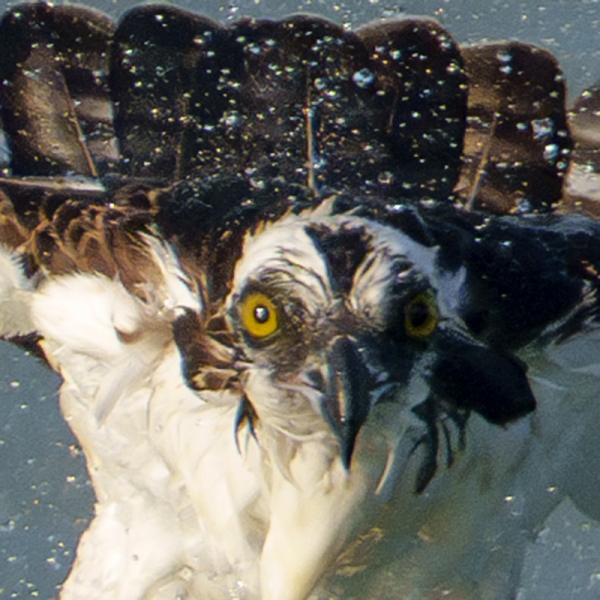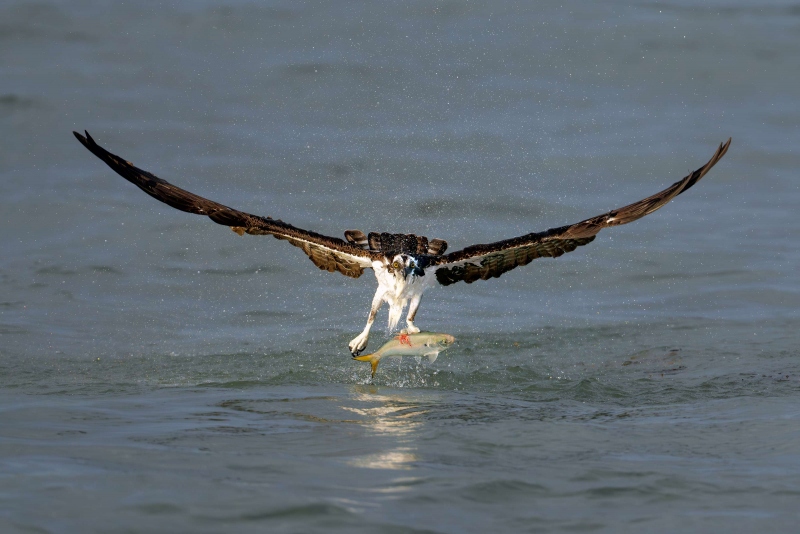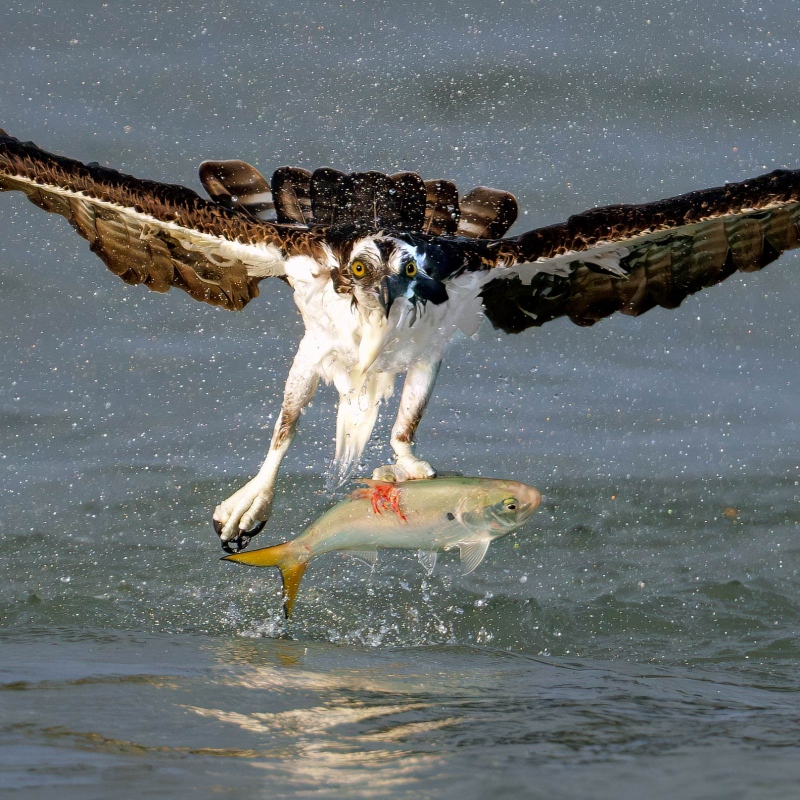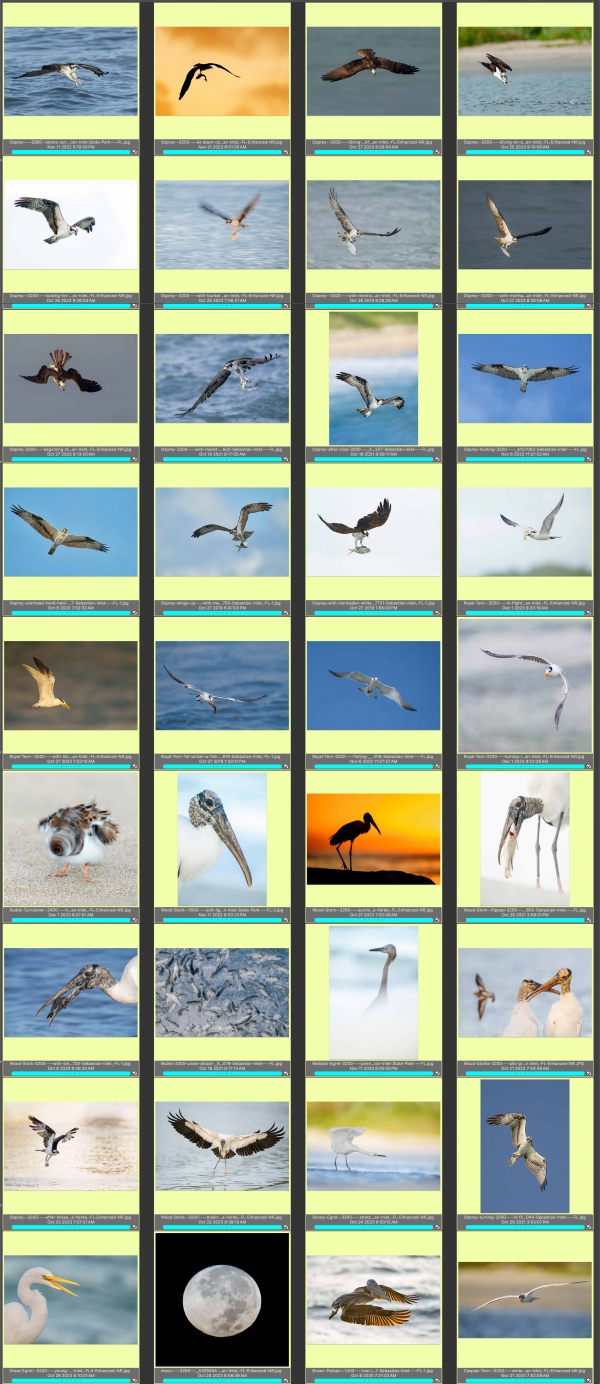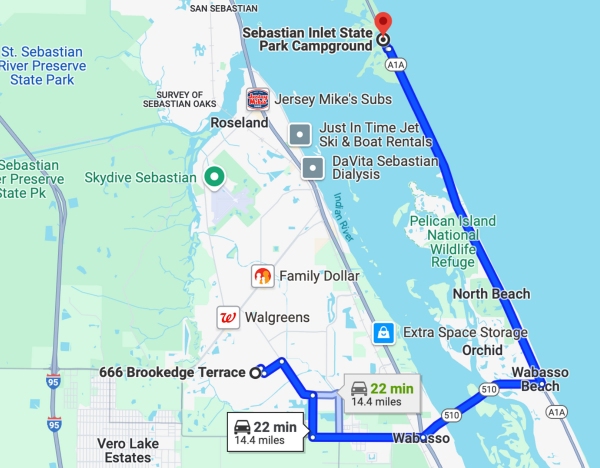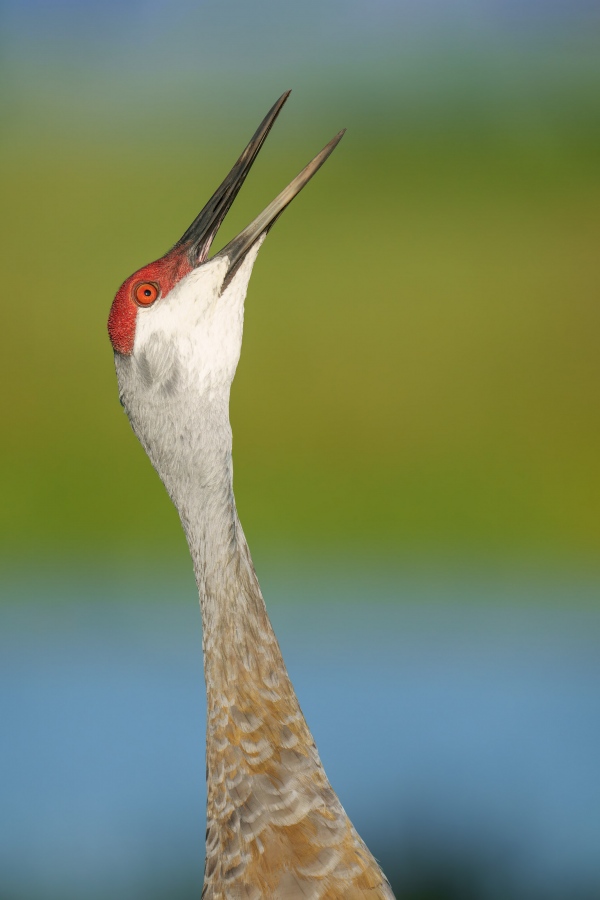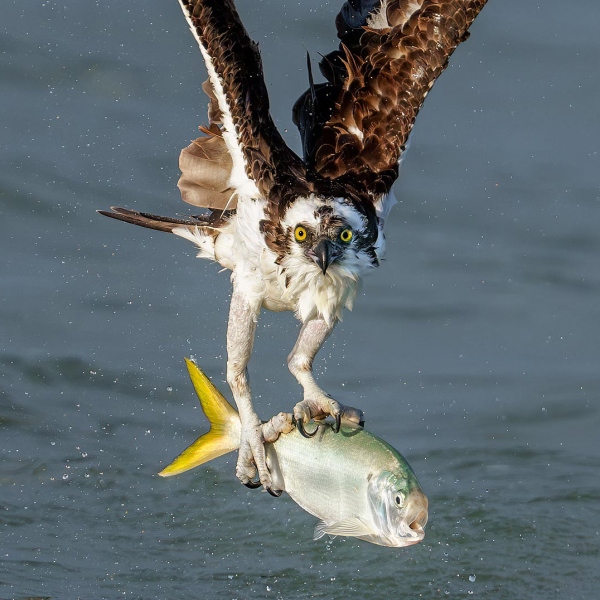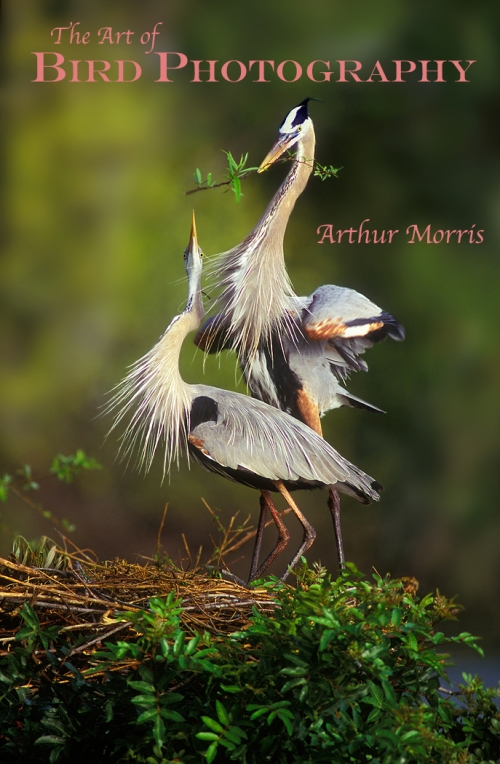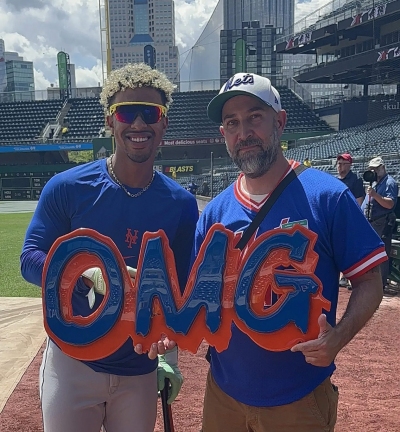What’s Up?
Today is Tuesday 8 October. Hurricane Milton is on its way to Florida. It is currently aimed right at Tampa and should make landfall some time on Wednesday. With this storm following close on the heels of Hurricane Helene, the potential for catastrophic, double-barreled damage along the coast of Southwest Florida boggles the mind. My prayers are with everyone in the path of the storm. At the very least, Lakes Wales and ILE should get lots of rain and high winds, the latter on Thursday.
You can check out the latest on Milton here.
Right now it is cloudy and still so I am headed down to the lake the moment I hit Publish. Whatever the heck you are doing, I hope that you too have a great day.
Please remember to use the B&H links that are found on most blog pages and to use the BIRDSASART discount code at checkout when purchasing your new gear from Bedfords to get 3% back on your credit card and enjoy free second-day air FedEx. Please, also, consider joining a BAA IPT. You will be amazed at how much you will learn!
If an item — a Delkin flash card, or a tripod head — for example, that is available from B&H and/or Bedfords, is also available in the BAA Online Store, it would be great, and greatly appreciated, if you would opt to purchase from us. We will match any price. Please remember also to use my B&H affiliate links or to earn 3% cash back at Bedfords by using the BIRDSASART discount code at checkout for your major gear purchases. Doing either often earns you free guides and/or discounts. And always earns my great appreciation.
Supporting My Efforts Here
If you enjoy and learn from the blog, are all set for gear, or live overseas, consider leaving a BAA Blog Thank You Gift here.
If you enjoy and learn from the blog, please consider using one of my affiliate links when purchasing new gear. It will never cost you a single penny. To support my effort here, please order from B&H by beginning your search here. Or, click here, to order from Bedfords and enter the discount code BIRDSASART at checkout to receive 3% cash back to your credit card and enjoy free Second-Day Air Fed-Ex shipping. It is always best to write for advice via e-mail.
In many cases, I can help you save some serious dollars. And/or prevent you from purchasing the wrong gear.
Need a New Laptop?
Need a new laptop for photography? Consider the Apple 16″ MacBook Pro (M3 Max, Space Black).
Key Features
Apple M3 Max 16-Core Chip
128GB Unified RAM | 8TB SSD
16″ 3456 x 2234 Liquid Retina XDR Screen
40-Core GPU | 16-Core Neural Engine
Wi-Fi 6E (802.11ax) | Bluetooth 5.3
Thunderbolt 4 | HDMI | MagSafe 3
SDXC Slot | FaceTime HD 1080p Camera
Backlit Magic Keyboard
Force Touch Trackpad | Touch ID Sensor
macOS
In other words, the bomb. Looking to spend a bit less? Click here and search for Apple MacBook Pro M3. Feel free to e-mail or call (863-221-23720 for laptop advice.
Why Not Buy Your MacBook Pro From Apple?
If you purchase a laptop from Apple and have a problem right off the bat they will fix it for you in a few days or a week after you send it to them. They will not replace it. If you purchase a laptop from B&H and have a problem right out of the box, they will send you a new one no questions asked.
|
|
Image #1: The tight face crop is from the converted raw file |
Bird Pupils versus Human Pupils
Check out the different size of the bird’s pupils. As we saw in the previous blog post here, the pupil of the bird’s left eye, the one on our right, is relatively huge. The pupil of the right eye, however, is relatively tiny. Several readers noted properly with regard to the previously shared image from that same morning (created 3 minutes later), that the pupil of the eye in the shade was opened wide to let in more light, while the pupil of the sunlit eye was much smaller.
Dr. Eugen Dolan, neurosurgeon, was the first to let me know (via e-mail) that human eyes are different. He wrote:
Arthur,
With regard to your Osprey pupil question, you have posed a VERY complex question.
The pupils of a bird’s eye are controlled by striated muscles that can be controlled voluntarily. Thus, they can control each pupil independently.
In humans, to have one pupil noticeably larger than the other does not normally occur.
Human pupils shrink symmetrically in bright light and dilate symmetrically in dim light. If the light is different on each eye, the brain averages the amount of light as there is a central control processor of the smooth muscles of the pupil; both pupils will pretty much always be the same size and always dependent on the average amount of light.
There is a congenital condition in which one pupil is larger than the other; it can sometimes be seen in family photos.
Uneven pupil dilation in humans can be caused by some medications, a lens dislocation, or severe head trauma that results in an epidural hemorrhage.
I found an article entitled Bird pupils behave unexpectedly differently. It surprised me. You might want to check it out.
Eugen
I followed the link to the MP Neuro (Max Planck Neuroscience) website that Eugen sent and read the article with interest. You can find it here.
In response to some of the comments at that same blog post, I asked a leading question. Then, two folks, including blog regular Dr. Adam Rubenstein, left comments confirming what Eugen had told me.
I am constantly amazed by the incredible length and breadth of the knowledge base of the folks reading the BIRDS AS ART Blog.
|
|
|
This image was created on 27 October 2023 at Sebastian Inlet, north of Vero Beach, FL. Standing at full height, I used the Robus RC-5570 Vantage Series 3 Carbon Fiber Tripod/Levered-Clamp FlexShooter Pro-mounted Sony FE 600mm f/4 GM OSS lens with the Sony FE 1.4x Teleconverter, and The One, the Sony Alpha 1 Mirrorless Digital Camera.. ISO 800. The exposure was determined by Zebras with ISO on the rear wheel: 1/3200 second at f/5.6 (wide open) in Manual mode. RawDigger showed that the exposure was perfect. AWB at 8:26:56am on sunny morning. Tracking: Zone/AF-C with Bird-Eye/Face Detection performed perfectly. Click on the image to enjoy the high-res version. Image #1A: The Optimized version: Osprey with fresh caught Yellowfin Menhaden |
Not the Same Bird; Not the Same Fish!
This image is quite similar to the 8:29:59am image originally posted in the A Ton of Learning From a Single Osprey Image blog post here. But it was created roughly three minutes earlier than that image and thus, could surely not be the same individual fish, and it almost surely was not the same Osprey.
The reason that the shaded side of the bird’s face was much darker than the shaded side of the bird’s face in the image created 3 minutes three seconds after this one, is that the action took place about 20 yards further to the west. Thus, the bird was further off sun angle and the shadows on the left side of its face were darker.
Just another reason to strive to stay on sun angle.
|
|
|
Click on the image to enjoy the high-res version. Image #1B: A tight square crop of the optimized version of the Osprey with fresh caught Yellowfin Menhaden 8:26:56am image |
By Popular Demand
Folks were so impressed with the tight square crop of the 8:29:59am image that I decided to go that route with today’s 8:26:56am photo. Again, the image quality of sharp a-1 raw files allows for relatively huge crops.
Again here, I lightened the shaded side of the Osprey’s face using Tim Grey Dodge and Burn and followed that up with some fancy Eye Doctor work. As detailed in both DB II and in the DB III Video Series.
|
Do not click on the composite image; simply scroll down for the best viewing. While Sebastian Inlet is justifiably famous around the world for the Ospreys diving for migrating saltwater fish each fall, there are a variety of desirable avian subjects there as well in October and November. Keep reading if you would like to join me on what will surely be a memorable photographic and learning experience. |
Pick Your Own Dates Short-notice Sebastian Inlet Ospreys and More BAA Personalized Instructional Workshops
Ridiculously Inexpensive!
Dates: October 29 (arrive on the afternoon of Monday the 28th) thru the morning session on Saturday 22 November
Right now I have four folks for the last week, 17-22 NOV. So any few days (or a week!) after 28 OCT and before mid-NOV would be fabulous.
As BIRDS AS ART lost more than $100,000 in tax year 2023, I am moving forward looking more at sharing expenses than at making money. Simply put, for more reasons than I will list here, sharing an AirBnB or VRBO place maximizes learning while reducing your overall travel costs.
Consider joining me at Sebastian Inlet this fall for some great bird photography and a ton of learning. Life is short; what are you waiting for? While a 600mm f/4 lens is ideal, you could do the whole trip with a variety of other lenses including a 500mm f/4, a 400mm f/2.8, a 400mm DO, a 200-600, a 100-500, a 300mm f/2.8 with TCs, or one of the great new Nikon Z telephoto or telephoto zoom lenses.
Bob Eastman is driving from Wisconsin and doing all 26 days, from 28 OCT thru the morning session on 22 NOV, prime time for Ospreys diving and catching a variety of saltwater fish. There are four bedrooms in this great AirBnB property that is just 22 minutes from the south jetty at the State Park, 24 minutes from the northwest pool where the Ospreys spent a lot of time last year. Please note that NOV 21-22 are sold out.
Hopefully, those who come would stay for a week or ten days (or all 26 days!) to maximize the opportunities. As above, fewer days would work also. Fly to Melbourne (MEL) or Orlando (MCO) and rent a car. Local folks who would like to arrange a morning or two of In-the-Field Instruction during October should get in touch via e-mail.
Here, if you stay in the AirBnB with me, are the ridiculous low rates for the in-the-field sessions (that include the daily Image Review and Photoshop sessions).
$250 for a morning session
$150 for an afternoon session.
Brunch and dinners at the AirBnB will cost you $20/day.
If you are interested, let me know your preferred dates via e-mail and I will get back to you with the per/night price for the lodging.
|
There is no need to travel an hour by car to get to Sebastian Inlet from Vero Beach. |
Typos
With all blog posts, feel free to e-mail or to leave a comment regarding any typos or errors.

